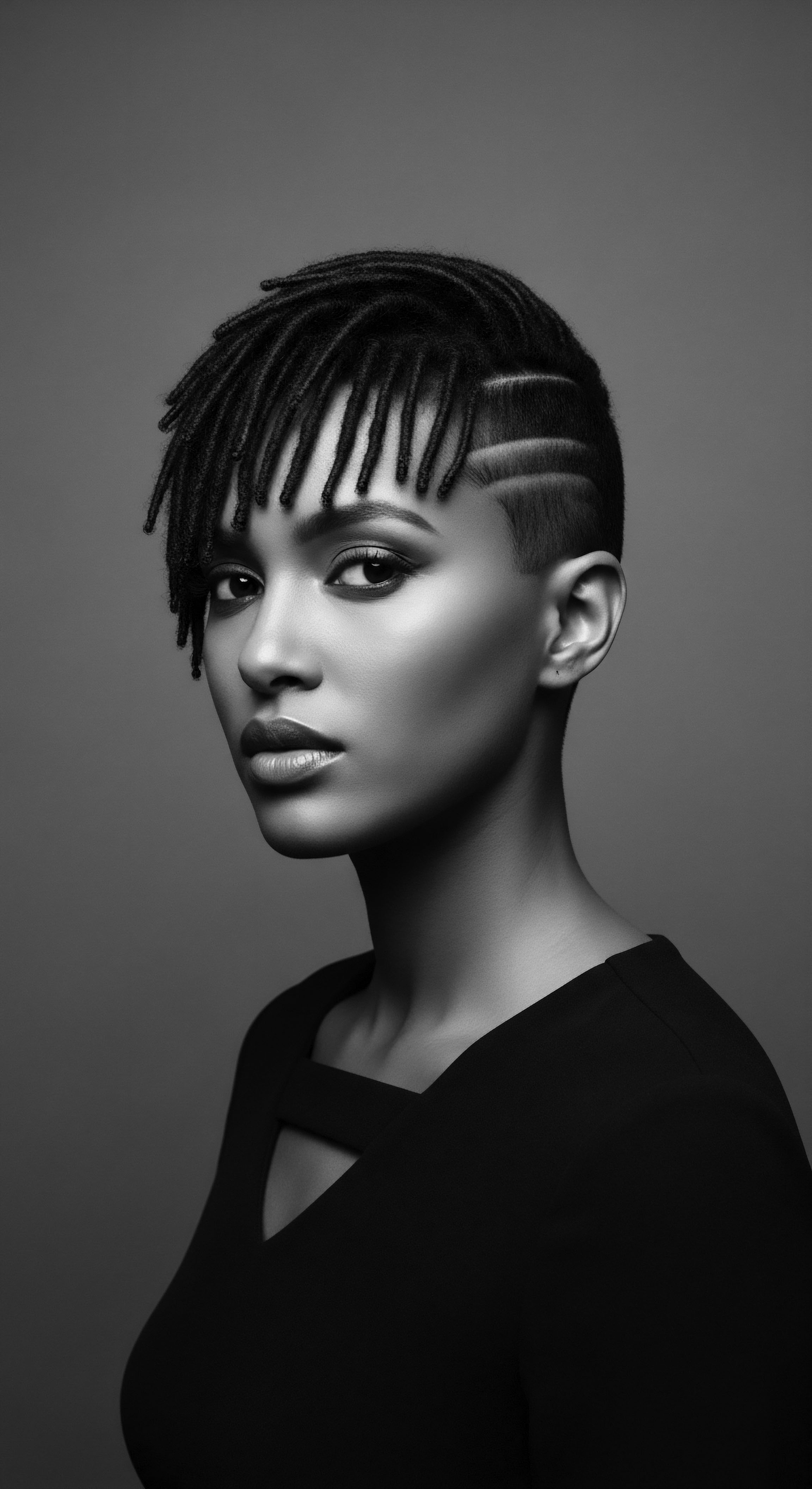
Roots
Our hair, coiled or curled, often tells a story far older than our own lived years. It carries echoes of windswept savannas, whispers of ancient rituals, and the deep, abiding wisdom of generations past. To consider the ancestral significance of coloring textured hair is to lean into this rich lineage, to perceive each strand not merely as a biological marvel, but as a living archive, holding centuries of cultural expression, resilience, and identity within its very structure.
This journey into hue begins at the very source, in the fundamental understanding of textured hair’s unique biology, a tapestry woven by climate, evolution, and the ingenious adaptations of our forebears. It is here, at the cellular level, where the story of ancestral color first takes hold, a narrative written in melanin and the ancient pigments that once adorned crowns across continents.

The Sacred Pigment and Curl’s Blueprint
At the heart of textured hair’s inherent color lies Melanin, a complex polymer primarily produced by specialized cells known as melanocytes. These cells, nestled within the hair follicles, produce two main types of melanin ❉ Eumelanin, which gives rise to black and brown shades, and Pheomelanin, responsible for red and yellow tones. The ratio and distribution of these pigments define the vast spectrum of natural hair colors found across populations.
In textured hair, often characterized by its elliptical follicle shape, eumelanin typically presents in higher concentrations, lending itself to deeper, richer hues. This intrinsic coloration was not just a biological happenstance; it was the canvas upon which ancestral societies painted their stories of belonging and spirit.
The very structure of textured hair – its unique coiling, its density – played a role in how color was perceived and applied traditionally. Unlike straight hair, which allows light to reflect more uniformly, the intricate curves and bends of textured hair scatter light, creating a perceived depth and dimension that shifts with movement and illumination. This optical effect meant that ancestral colorants, even those that offered subtle tints, created dynamic visual statements, enhancing the hair’s natural vitality. Understanding this foundational biology allows us to appreciate how traditional coloring practices engaged directly with the hair’s intrinsic nature, honoring its inherent form rather than seeking to erase it.
The ancestral meaning of textured hair color connects deeply to biological foundations and the ingenuity of early cultural practice.

Early Earth Pigments and Botanical Tints
Long before the age of synthetic dyes, our ancestors looked to the earth itself, and to the vibrant life it sustained, for ways to alter hair’s appearance. Earth pigments, such as various forms of Ochre, provided a palette of reds, yellows, and browns. These natural clays, rich in iron oxides, were ground into fine powders and mixed with fats, oils, or water to create pastes that adhered to hair. Beyond minerals, the plant kingdom offered a bounty of natural dyes.
The leaves of the Henna Plant (Lawsonia inermis), for instance, yielded a range of reddish-brown shades, while Indigo, sourced from the Indigofera plant, provided blues that could deepen to a near-black when combined with henna. These were not random choices; they were intentional selections born from intimate knowledge of local flora and geological formations.
The application of these early colorants was often deeply intertwined with practical needs. Many plant-based dyes, beyond their chromatic properties, possessed medicinal or protective qualities. Some offered anti-fungal benefits, others acted as natural sunscreens or insect repellents.
This dual functionality meant that coloring the hair was rarely a singular act of adornment; it was a holistic practice that contributed to hair health and overall wellbeing, echoing a broader ancestral philosophy that blurred the lines between beauty, utility, and spiritual connection. The wisdom embedded in these choices reflects a profound understanding of their natural environment, passed down through oral traditions and communal practice.
- Ochre ❉ Predominantly red, yellow, and brown earth pigments, often mixed with animal fats for application, providing both color and sun protection.
- Henna (Lawsonia inermis) ❉ A plant-based dye offering reddish-brown to orange hues, also known for its conditioning properties and strengthening effects on hair strands.
- Indigo (Indigofera tinctoria) ❉ Used alone for blue tones or in combination with henna to achieve deeper browns and blacks.
- Black Walnut Hulls (Juglans nigra) ❉ Yielding dark brown to black dyes, used for centuries to deepen hair color.
- Turmeric (Curcuma longa) ❉ While primarily a food spice, some traditions used it for subtle golden or yellowish tints, though its color is less permanent on hair.
This elemental understanding of hair’s physical properties and the earth’s offerings formed the first layer of ancestral significance, setting the stage for the more elaborate rituals and cultural narratives that would follow. It speaks to an inherited ingenuity, a deep connection to the land that provided both sustenance and self-expression.
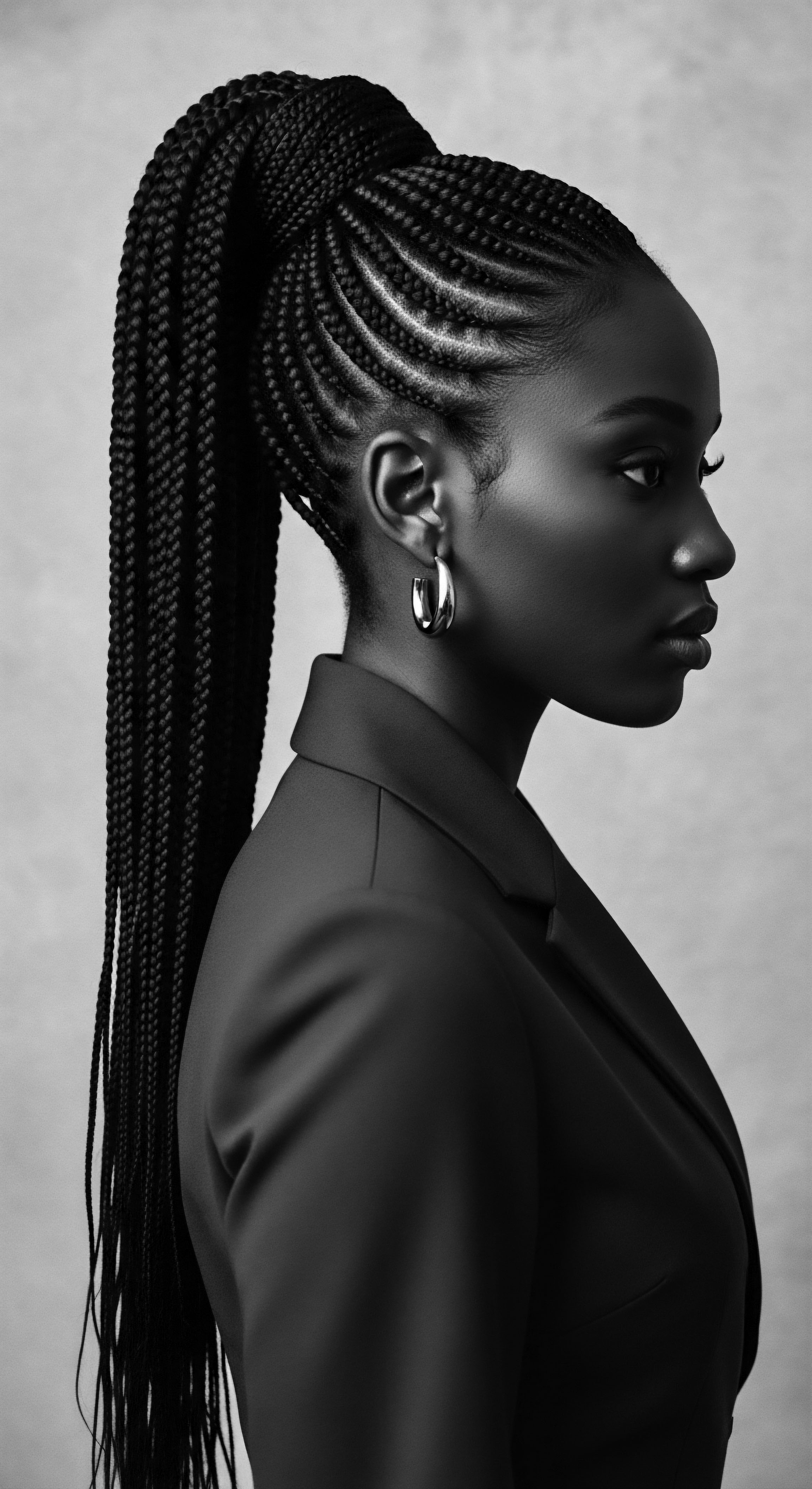
Ritual
The transformation of hair through color, from its elemental origins, blossomed into an elaborate language of social, spiritual, and communal expression across ancestral Black and mixed-race communities. It moved beyond simple application, becoming a ritualistic act, imbued with intent and significance. The very process of coloring, often a communal endeavor, served to reinforce bonds, transmit knowledge, and visually articulate an individual’s place within the collective. This was no fleeting trend; it was a ceremonial acknowledgment of life’s passages, a declaration of identity, and a profound connection to the metaphysical world.
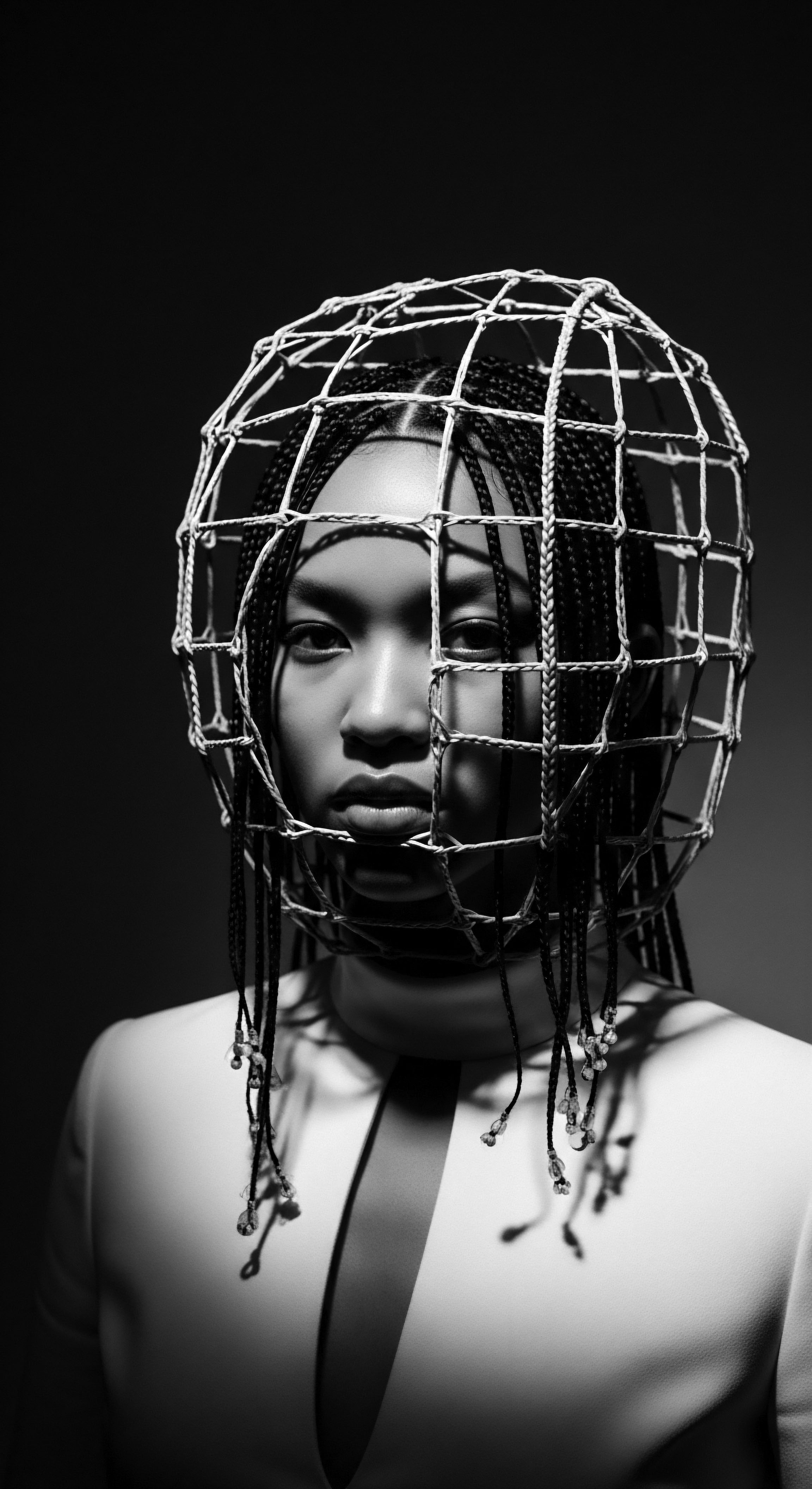
What Did Hair Color Signify in Ancestral Communities?
In countless pre-colonial African societies, hair carried extraordinary weight as a medium of communication. The chosen styles, and crucially, their colors, could convey a vast array of personal and communal information. A change in hair color, or the addition of color, might signify age, marital status, social rank, ethnic identity, or spiritual beliefs. For instance, among the Himba People of Namibia, perhaps one of the most compelling examples, women traditionally coat their hair and skin with Otjize, a paste of red ochre, butterfat, and aromatic resins.
This distinctive reddish hue is not merely cosmetic. It symbolizes a deep connection to the earth, to their ancestors, and to their cultural identity (Hirst, 2000; Bebrų Kosmetika, 2024). The color shift from natural black to a radiant red-brown marked a woman’s journey through life stages, particularly the transition from maidenhood to marriage and motherhood, reinforcing communal values and roles.
The ritual of applying otjize, a daily practice for many Himba women, involved meticulous care and was often a shared activity among women, reinforcing sisterhood and the transmission of cultural knowledge. It was a visible declaration of their unique place in the world, a defiance of assimilation, particularly during colonial encounters that often sought to diminish indigenous practices (Byrd and Tharps, 2014). This persistent, intentional alteration of natural hair color stands as a testament to the enduring power of cultural identity and the deeply embedded ancestral significance of hair.
| Cultural Group Himba (Namibia) |
| Ancestral Colorant Red Ochre (Otjize) |
| Associated Significance Connection to earth and ancestors, life stages, beauty, status, sun protection. |
| Cultural Group Ancient Egyptians (North Africa) |
| Ancestral Colorant Henna, Dried Cow's Blood |
| Associated Significance Youth, vitality, status, association with deities (Isis), covering greying hair. |
| Cultural Group Samburu & Rendille Warriors (Kenya/Tanzania) |
| Ancestral Colorant Red Ochre Clay, Animal Fat |
| Associated Significance Warrior status, identity, spiritual connection, protection. |
| Cultural Group Igbo (Nigeria) |
| Ancestral Colorant Edo (clay dye) |
| Associated Significance Beautification, social status, distinguishing the affluent. |
| Cultural Group These ancestral applications of color underscore hair's role as a living canvas for cultural expression and heritage. |

How Did Hair Coloring Shape Social Interaction and Community?
The communal nature of hair care, which naturally extended to coloring practices, formed a bedrock of social interaction. Hairdressing was not a solitary task; it was often performed by trusted family members or close friends, transforming into an opportunity for storytelling, mentorship, and strengthening social ties (Afriklens, 2024). This shared experience of applying ancestral tints meant that the color itself carried communal memory, each shade a silent acknowledgment of shared history and collective identity.
The visible shifts in hair color after a ritualistic application served as a public announcement, instantly recognized and understood by community members. It fostered a sense of belonging and reinforced social cohesion.
Moreover, the very act of maintaining these colored styles required time and dedication, further solidifying bonds. Children learned about their heritage not only through stories but through participating in the hands-on practice of preparing and applying these ancestral hues. The wisdom of identifying the right plants, extracting the pigments, and understanding the precise mixtures for particular effects was passed down, keeping these traditions vibrant and alive across generations. This intergenerational transfer of knowledge ensured that the significance of coloring textured hair remained deeply rooted in the collective memory and ongoing life of the community.
Traditional hair coloring rituals built social fabric, transmitting ancestral knowledge and solidifying communal identity.
The deliberate alteration of hair’s natural pigment through time-honored methods was a profound expression of self and community, a living dialogue with heritage. It articulated a complex understanding of beauty that was inextricably tied to social function, spiritual belief, and collective memory.
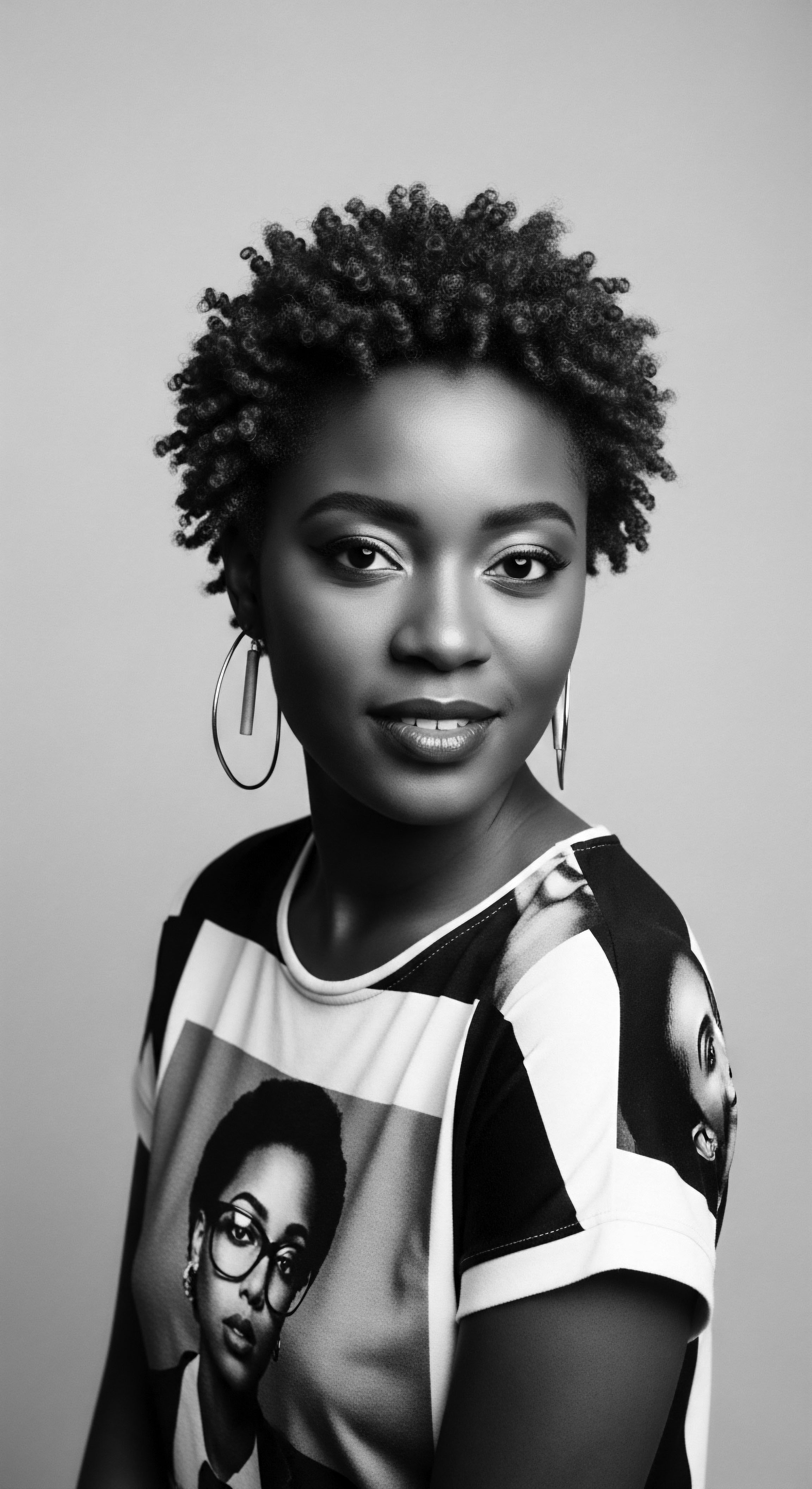
Relay
The enduring spirit of ancestral hair care, particularly the use of color, continues its journey through time, shaping contemporary practices and challenging modern perceptions of beauty. The knowledge passed down through generations, often dismissed or obscured by colonial influences, now finds new resonance in a world seeking authentic connections to heritage and holistic wellbeing. The science of textured hair, far from discrediting ancient methods, increasingly validates the efficacy of traditional ingredients and practices, creating a powerful relay between past wisdom and present understanding.
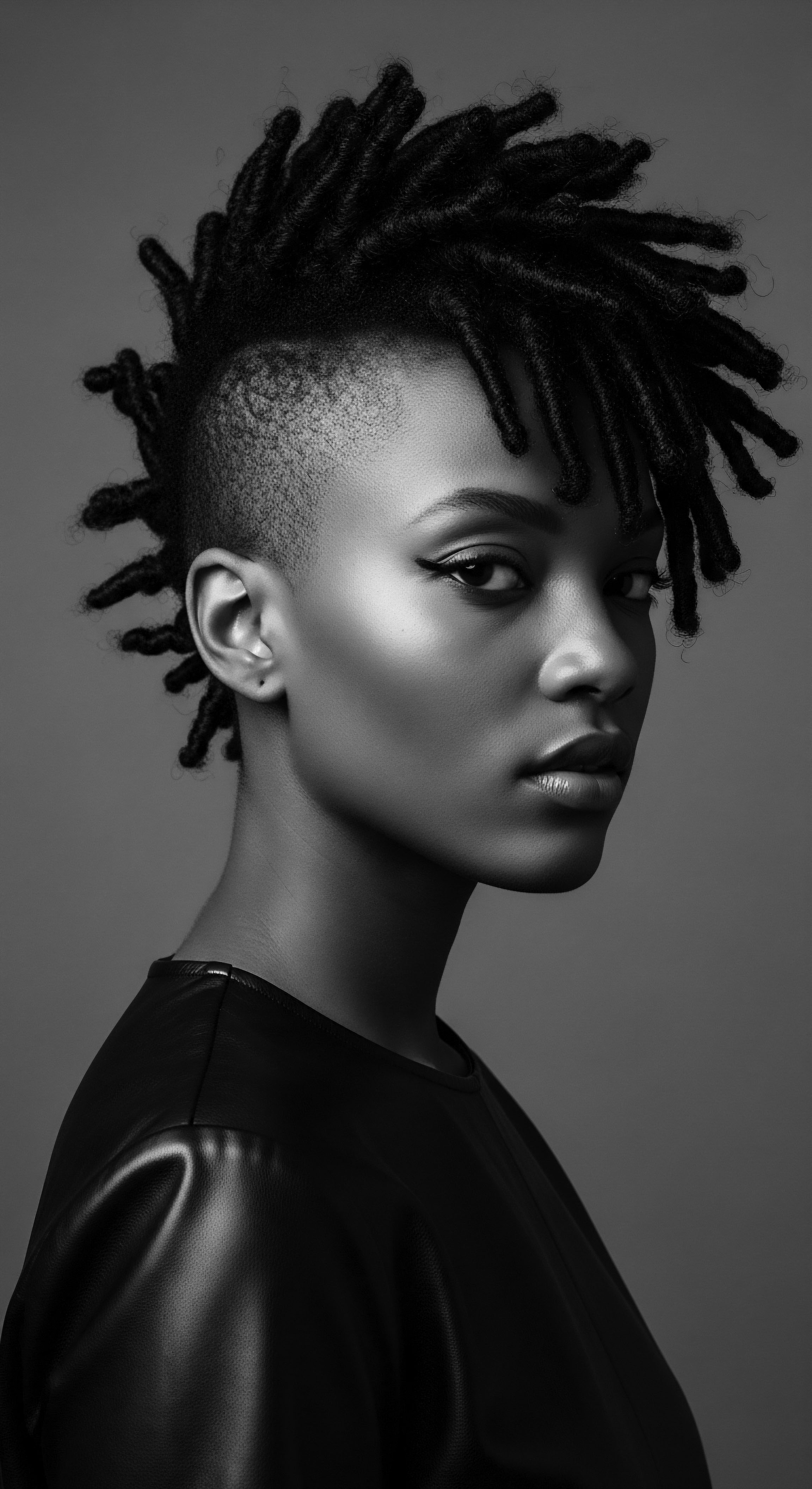
How Does Ancestral Color Knowledge Inform Modern Hair Science?
Modern trichology and cosmetic science, when viewed through a heritage lens, reveal intriguing connections to ancestral coloring practices. The natural dyes used for centuries—Henna, Indigo, Various Clays, and Plant Extracts—are now subject to rigorous scientific analysis. Research on compounds like lawsone in henna demonstrates its affinity for hair keratin, forming a coating that strengthens the strand and imparts color without significantly altering the hair’s intrinsic structure (Lush, 2024; ResearchGate, 2022; ResearchGate, 2018). This contrasts sharply with many synthetic dyes that penetrate and chemically alter the hair’s cortex, sometimes leading to damage.
Ancestral practitioners understood the gentle, building nature of these botanical tints, observing their protective qualities and the way they improved hair’s condition over time. Modern science provides the molecular explanation for this observed ancestral wisdom.
Consider the Himba people’s otjize, a blend of red ochre and butterfat. Beyond its deep cultural symbolism, its protective qualities against the harsh African sun are scientifically sound. Ochre, as a mineral pigment, offers a degree of UV protection, while the butterfat provides an emollient barrier, sealing in moisture and guarding against environmental stressors (Bebrų Kosmetika, 2024; the thread, 2020).
This holistic approach, where adornment simultaneously serves as protection and a cultural statement, stands as a testament to an integrated understanding of hair health rooted in direct observation and generational trial. The wisdom was intuitive, profound, and now, often, provable.
- Lawsonia Inermis (Henna) ❉ Lawsone pigment coats hair, adding sheer color and strengthening the cuticle, reducing breakage.
- Indigofera Tinctoria (Indigo) ❉ Provides blue to black shades when combined with henna, interacting with hair proteins for a rich, deep color.
- Red Ochre ❉ Mineral pigment, often mixed with fats, offers UV protection and environmental shielding, beyond its symbolic color.

What Role Does Colored Hair Play in Contemporary Black and Mixed-Race Identity?
In the contemporary landscape, the legacy of ancestral hair coloring continues to play a central role in the identity formation and self-expression of Black and mixed-race individuals. The resurgence of the Natural Hair Movement, drawing strength from ancestral practices, has brought renewed appreciation for indigenous colorants and a critical eye towards processes that historically sought to erase Black hair’s inherent textures and tones (Scholar Commons, 2023; JSTOR Daily, 2019). For many, choosing to color their textured hair with natural, historically rooted pigments, or even opting for vibrant contemporary shades, is an act of reclamation, a visible connection to a heritage that defied suppression.
This is a powerful statement of self-definition, a continuation of the ancestral dialogue through a modern lens. The decision to color one’s hair today, while personal, carries the weight of history—a history where hair was politicized, where its natural state was deemed “unacceptable” in dominant society (JSTOR Daily, 2019; UFS, 2020). By choosing to adorn their textured hair with color, individuals assert agency, celebrate their unique aesthetic, and honor the ingenuity of those who came before them.
It is a living legacy, a vibrant assertion of a heritage that refused to be silenced, echoing the deep spiritual and social communication that coloring held for ancestors. This purposeful choice of color, whether from ancient plant extracts or contemporary innovations, remains a deeply personal act with a far-reaching communal and historical resonance.
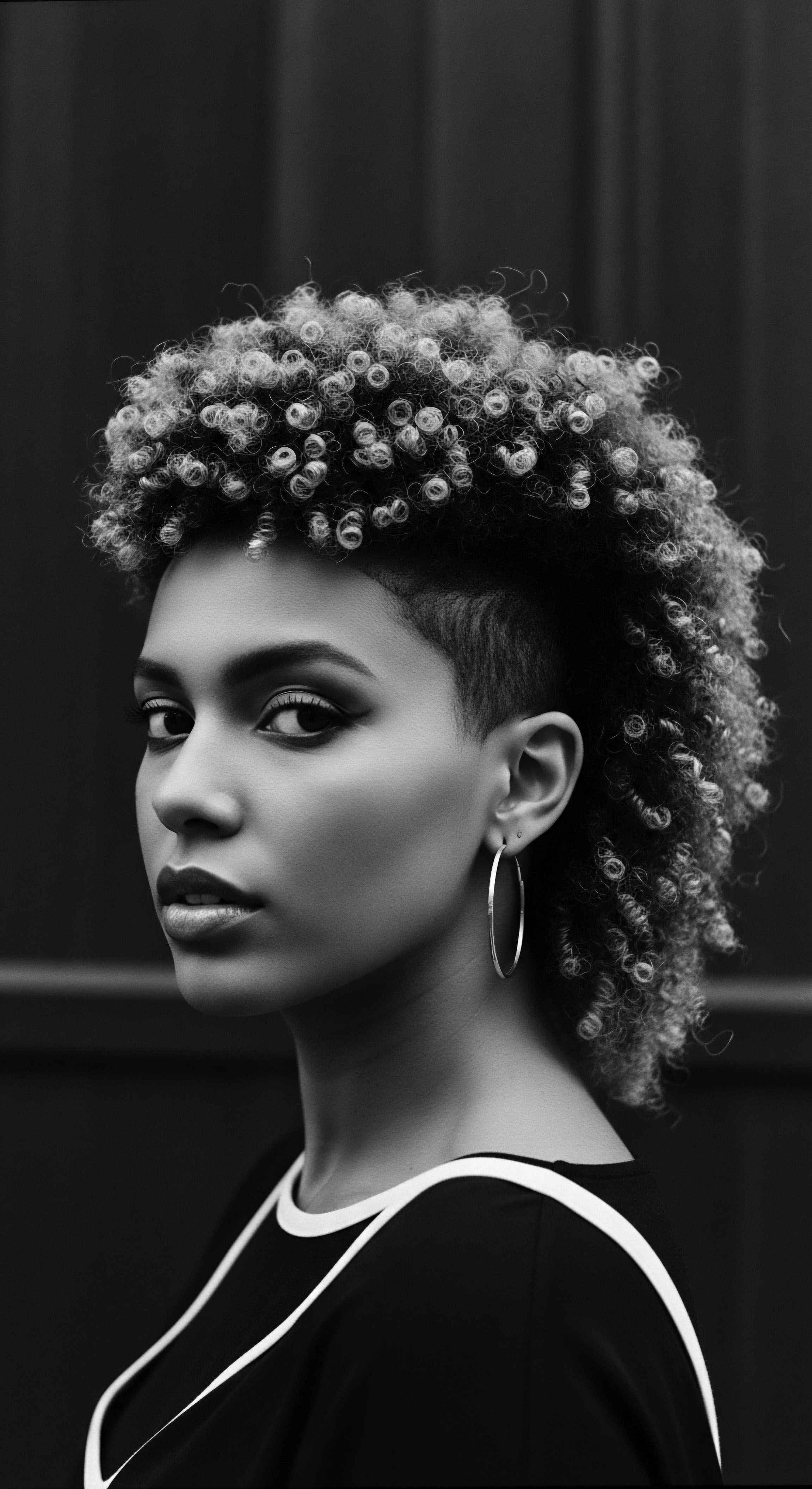
Reflection
As we trace the lineage of color through textured hair, from its elemental origins in the earth’s clays and botanical gifts to its vibrant assertions in our present day, a profound understanding emerges ❉ the act of coloring these strands is an unbroken conversation with our past. Each shade, each pigment, echoes the stories of resilience, identity, and profound connection to heritage that our ancestors so artfully inscribed upon their crowns. This is not merely about aesthetic choice; it speaks to the very soul of a strand, a testament to inherited wisdom and the enduring spirit of Black and mixed-race hair traditions. Our hair remains a living archive, its fibers holding the memory of ancient hands, communal rituals, and the unwavering resolve to express who we are, where we come from, and where we are headed.
The ancestral significance of coloring textured hair is a luminous legacy, continuously informing our expressions of beauty, wellness, and self-possession. It is a timeless affirmation of our roots, continually blooming in new, vibrant forms.
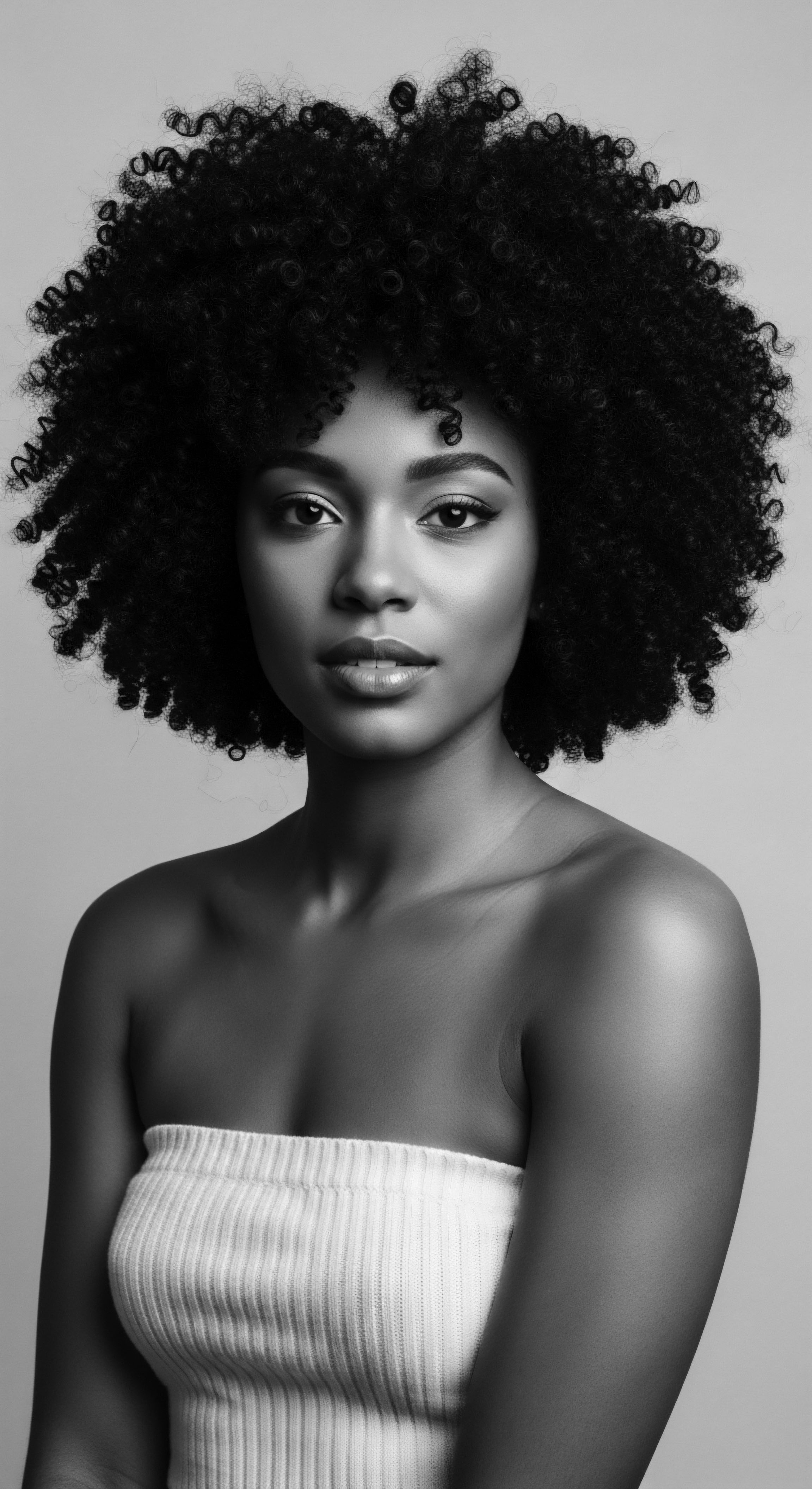
References
- Afriklens. (2024). African Hairstyles ❉ Cultural Significance and Legacy.
- Bebrų Kosmetika. (2024). The Power of Hair in African Folklore ❉ Rituals and Traditions.
- Byrd, A. D. & Tharps, L. D. (2014). Hair Story ❉ Untangling the Roots of Black Hair in America. St. Martin’s Griffin.
- Hirst, K. K. (2000). Prehistory.
- JSTOR Daily. (2019). How Natural Black Hair at Work Became a Civil Rights Issue.
- Juniper Publishers. (2024). Cosmetic Ethnobotany Used by Tribal Women in Epe Communities of Lagos State, Nigeria.
- Lush. (2024). Top Things to Know About Henna Hair Dye.
- ResearchGate. (2022). The Emergence of Habitual Ochre Use in Africa and its Significance for The Development of Ritual Behavior During The Middle Stone Age.
- ResearchGate. (2018). Synthesis and Evaluation of Herbal Based Hair Dye.
- ResearchGate. (2022). Recent Advancements in Natural Plant Colorants Used for Hair Dye Applications ❉ A Review.
- Sabinet African Journals. (2020). Indigenous knowledge applied to the use of clays for cosmetic purposes in Africa ❉ an overview.
- Salons De Beaute. (2023). Hair Coloring Across the Ages.
- Scholar Commons. (2023). African American Hair and Beauty ❉ Examining Afrocentricity and Identity Through the Reemergence and Expression of Natural Hair.
- the thread. (2020). Red Ochre ❉ The Colour of Survival.
- UFS. (2020). The meaning of hair for Southern African Black women by Chéri R. Matjila.
